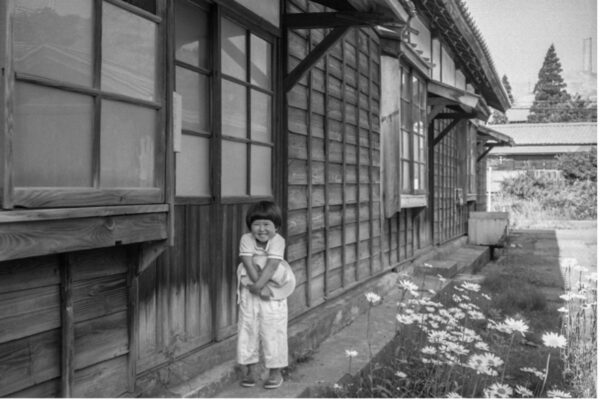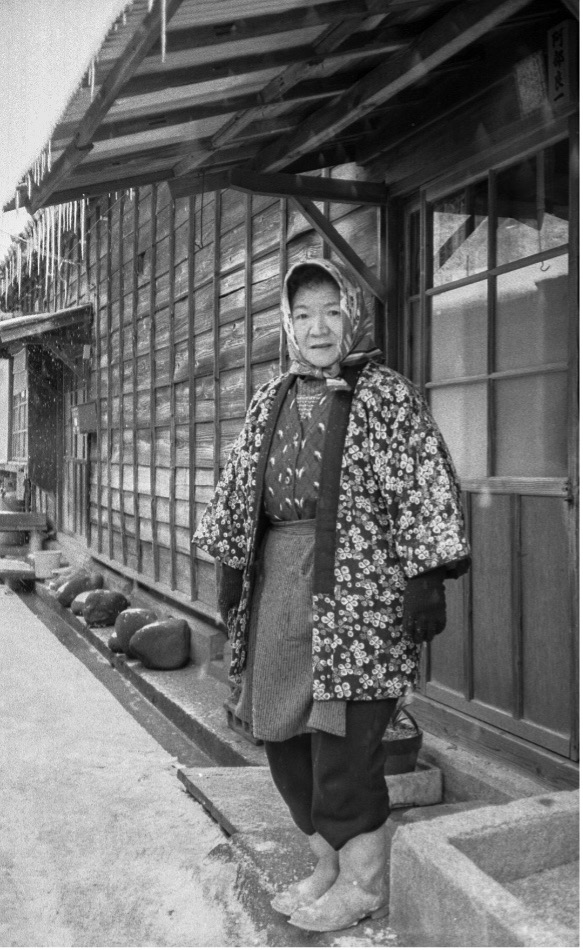Films left behind by Eiko Terasaki documenting the mining town of Hosokura
Eiko Terasaki Photo Book Publication Committee(Japan)

In Uguisuzawa, a town situated at the foot of the Ōu Mountains in northwestern Miyagi Prefecture, the Hosokura Mine once operated as one of Japan’s foremost sources of lead and zinc.
Eiko Terasaki, born in 1941 in former Manchuria, relocated to Hosokura with her family, who managed a small shop. Following the announcement of the mine’s closure, Terasaki turned to photography as a means of documentation. Prior to the closure, she photographed the town, its residents, children, and even the animals kept there. Thereafter, her focus shifted to the traces of everyday life as they gradually disappeared, and to the landscape itself as it was overtaken by grass and undergrowth.
In total, Terasaki produced approximately 11,000 negatives. She passed away in 2016 at the age of 75, without having printed her photographs. This exhibition presents a selection of works from these negatives, offering insight into her sustained engagement with Hosokura and its transformation.

Eiko Terasaki Photo Book Publication Committee
Terasaki Eiko
Born in 1941 in former Manchuria. After the war, she moved with her family to Hosokura, Uguisuzawa Town, Miyagi Prefecture (now Kurihara City). Her parents ran a greengrocer\\\\\\\'s shop at the Hosokura Mine purchasing association, and her older and younger brothers worked at the mine. After suffering from caries as a child and battling the illness, she supported the family business as an accountant. She began photographing the town and its people immediately after the mine\\\\\\\'s closure was announced, leaving behind 371 films. She passed away suddenly in May 2016.
Tsutomu Koiwa
Born in Iwate Prefecture in 1962. His photo collections include "Onagawa Sea Story" (Katatsumuri Publishing), "FACES OF HUMANITY 93/94" (co-author), and "The Mirror of the Field Guardian" (private edition). His works have appeared in "Living After Catastrophe" (Sekai Bessatsu, Iwanami Shoten), "What is Technology?" (Heidegger, translated by Ichiro Mori, Kodansha), "Thus Spoke Zarathustra" (Nietzsche, translated by Ichiro Mori, Kodansha), and others. The Eiko Terasaki Photo Collection Publication Committee, of which he is the representative, won the 2024 Academic Award from the Photographic Society of Japan for "Films Left Behind by Eiko Terasaki Documenting the Hosokura."
Kiyoshi Sugimoto
History Department/Modern Indian History, Tokai University. He studies the regional history of Odisha and the mining history of the British Empire. For the past 15 years, he has been engaged in practical research in Sado with fellow researchers. He is a native of Sado.
Art Details
-
Art Number:11
-
Year of Production:2025
-
Exhibition Period:Autumn session: September 19th (Fri) - November 9th (Sun), 2025
-
Admission Fee:Free
Venue & Access
-
Location:Former Fukami Residence
-
Opening Hours:September 10:00-17:00, October/November 10:00-16:00
-
Closed:Tuesdays and Wednesdays (except public holidays)
